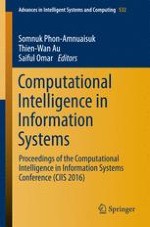2017 | Buch
Computational Intelligence in Information Systems
Proceedings of the Computational Intelligence in Information Systems Conference (CIIS 2016)
herausgegeben von: Somnuk Phon-Amnuaisuk, Thien-Wan Au, Saiful Omar
Verlag: Springer International Publishing
Buchreihe : Advances in Intelligent Systems and Computing
